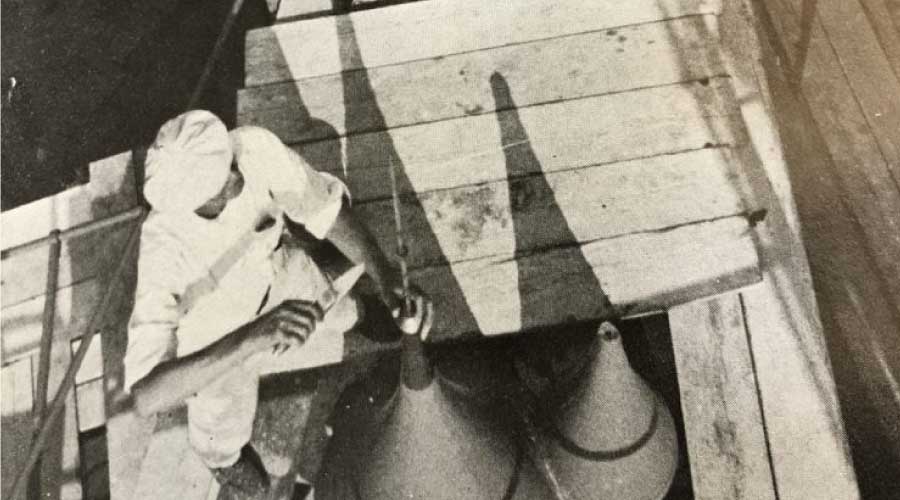Preventing Water Waste
Identifying and repairing sources of water waste in facility systems helps prevent small problems from becoming costly headaches
Maintenance and engineering managers are all too familiar with the fact that the more building construction done, the greater the maintenance workload becomes, and the more difficult it is to keep all systems performing efficiently.
Plumbing system efficiency is increasingly important to institutional and commercial facilities searching for savings in all areas of operations. Unfortunately, in many facilities, leaks and water waste in general tend to undercut this need for efficiency. A strategic approach to identifying and remedying water waste can curtail small problems before they become costly headaches.
Water-Waste Culprits
The most common plumbing trouble spots tend to be the water and steam lines that are under varying pressure. Less commonly, trouble can occur in the drain and sewer lines, which are not under pressure but get clogged, causing overflows.
Hot- and cold-water piping systems are usually copper, while steam and gas piping are malleable iron. Piping itself is usually not a problem unless it is very old, in which case leakage might occur first at the threaded joints or flanges, then in pipe walls, where pinholes appear due to thinning of the wall from corrosion and erosion.
Other frequent problems, however, occur in water valves, steam valves, pipe elbows, tees, unions and the like. Since the valves contain moving parts such as rubber O-rings, packing, valve stems and seats, they are vulnerable to normal wear, corrosion, erosion and mineral buildup.
In steam lines, erosion from high-velocity steam and corrosion from acid concentration cause thinning of the walls. Water hammer can crack piping or loosen joints and cause leaks in the header piping and thinner-walled heating coils.
Air-conditioning system piping might develop leaks, or the internal surfaces might be fouled by refrigerant oil, which can carry other contaminants through the system and shorten the life of pumps, refrigeration units, cooling towers and piping.
Maintenance Strategies
Frequent inspection of the following systems will reveal many waste reduction savings opportunities.
Hot- and cold-water systems. The sound of hot or cold water running, the sight of faucets dripping when turned off, or wet spots on the floor or ceiling where leaks are occurring are obvious first signs of plumbing trouble. But sometimes, the only indication is discoloration at the source of the leak — a rust stain on steel pipe or a blue-green copper oxide corrosion stain on copper pipe. Fixtures might show a mineral buildup near the faucet or flush stem before any accumulation of water appears. This buildup might be a sign of a very slow leak.
To reduce efficiency loss, managers can lower water-heater temperature settings and drain heaters of rust and residue. In high-use areas such as dormitories and patient rooms, installing automatic water shutoffs reduces water use substantially.
In older systems, sometimes no leakage appears at all, but the faucet becomes harder to open and close. If no action is taken, the valve soon will freeze solid, and no amount of force will open or close it. This is especially true where a valve is used very seldom, as in shut-off valves under sinks and other fixtures. Because no water flows around the seat or moving parts, minerals build up on them, creating a permanent seal.
Steam. Steam leaks usually are visible and look like water vapor. Leaks usually appear first at valve stems, piping joints or heating coil tubes. Then, as the effect of wear continues, leaks become more widespread and begin showing up on the pipe walls, as well. Steam traps located in heating-coil enclosures or boiler room that are not connected to a return system can be a major loss source.
Besides including fixture checks, PM inspection routes should include checks of valves that are used infrequently, such as supply shut-off valves and pop valves on boilers. These valves might not be cycled for years under normal operating conditions. When they become frozen by mineral buildup and corrosion, boiler pressure relief valves (PRV) can cause an explosion.
In the case of a water supply valve, it would be more of a nuisance situation. It is good practice to clean and cycle these seldom-used fixtures at least annually so they continue to function when needed.
In the case of boiler PRVs, cleaning and inspection is done during the summer boiler shutdown. Returning condensate to the boiler saves on both feedwater makeup and softener chemicals. Building management systems and controls, including programmable thermostats, should be inspected and adjusted at least quarterly to ensure they are at optimum settings.
Air-conditioning system components, such as chillers, pumps, cooling towers, and associated piping, are subject to heavy wear and tear and suffer loss of efficiency when water piping gets fouled by oil leaking through worn or damaged seals. In addition to a good cleaning every year and periodic inspection and repair, a refrigerant enhancer can prolong the life of these units and increase efficiency. Refrigerant oil can carry pipe welding slag, compressor winding varnish and other impurities into parts of the system, reducing heat transfer and causing flow friction, which reduces capacity.
As a result, the American Society of Heating Refrigeration and Air Conditioning Engineers estimates most systems lose 2-5 percent efficiency each year. Government reports show significant results from using enhancers, including reduced operating costs, more capacity, less run time, less friction, and longer, quieter operation.
Payback from Maintenance
A comprehensive daily plumbing inspection program, corrective maintenance, and some updating and retrofits to take advantage of innovations, can bring substantial and quick return on investments. As problems are solved, or improved preventive maintenance inspections and upgrades eliminate frequently occurring problems, managers can redirect funds to more productive uses.
They also will be able to convert much of the firefighting time to routine, scheduled repairs that don’t interrupt students, patients or employees. By calculating the amount of plumbing work to be done in labor hours per year, managers can ensure adequate staffing or show tasks that won’t be done with inadequate staffing.
Here is a rule of thumb: Every 2,000 hours of work available — 50 weeks multiplied by 40 hours — equals one skilled, full-time pipefitter or plumber.
Related Topics:











